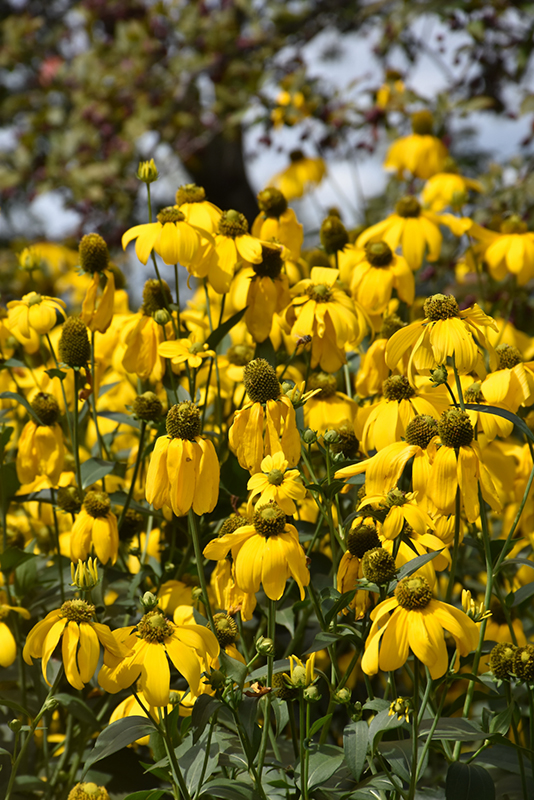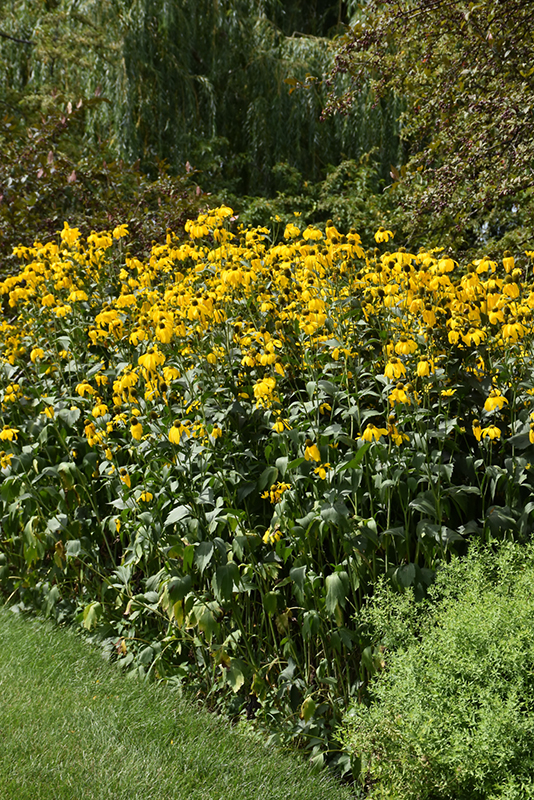Height: 6 feet
Spacing: 3 feet
Sunlight:
![]()
![]()
Hardiness Zone: 2a
Other Names: Black-Eyed Susan. Greenhead Coneflower
Description:
A tall and eye-catching selection presenting tall stems topped with drooping, golden yellow petals surrounding a green conical disc that matures to brown; spreads aggressively by underground rhizomes, best used for naturalizing or landscape applications
Ornamental Features
Cutleaf Coneflower has masses of beautiful gold recurved flowers at the ends of the stems from mid summer to early fall, which are most effective when planted in groupings. The flowers are excellent for cutting. Its attractive deeply cut lobed leaves remain green in color throughout the season.
Landscape Attributes
Cutleaf Coneflower is an herbaceous perennial with an upright spreading habit of growth. Its relatively fine texture sets it apart from other garden plants with less refined foliage.
This plant will require occasional maintenance and upkeep, and should be cut back in late fall in preparation for winter. It is a good choice for attracting butterflies to your yard, but is not particularly attractive to deer who tend to leave it alone in favor of tastier treats. Gardeners should be aware of the following characteristic(s) that may warrant special consideration;
- Spreading
- Disease
Cutleaf Coneflower is recommended for the following landscape applications;
- Mass Planting
- Hedges/Screening
- General Garden Use
- Naturalizing And Woodland Gardens
Planting & Growing
Cutleaf Coneflower will grow to be about 6 feet tall at maturity, with a spread of 4 feet. When grown in masses or used as a bedding plant, individual plants should be spaced approximately 3 feet apart. The flower stalks can be weak and so it may require staking in exposed sites or excessively rich soils. It grows at a fast rate, and under ideal conditions can be expected to live for approximately 10 years. As an herbaceous perennial, this plant will usually die back to the crown each winter, and will regrow from the base each spring. Be careful not to disturb the crown in late winter when it may not be readily seen!
This plant does best in full sun to partial shade. It prefers to grow in average to moist conditions, and shouldn't be allowed to dry out. This plant does not require much in the way of fertilizing once established. It is not particular as to soil type or pH, and is able to handle environmental salt. It is highly tolerant of urban pollution and will even thrive in inner city environments. This species is native to parts of North America. It can be propagated by division.

